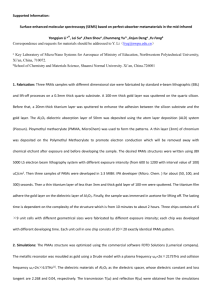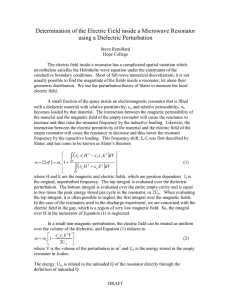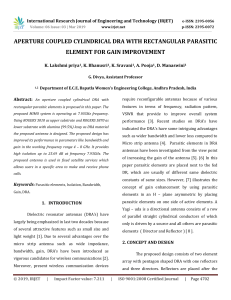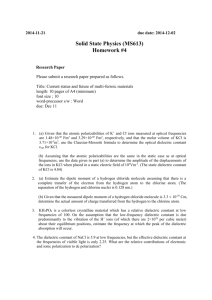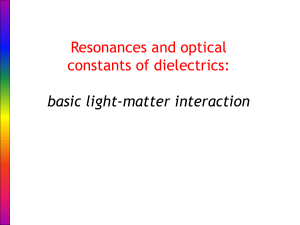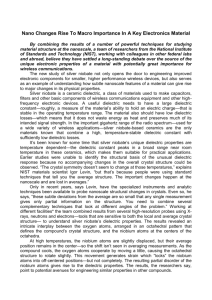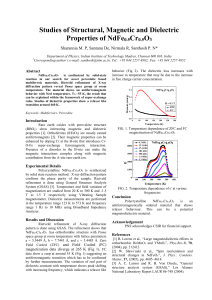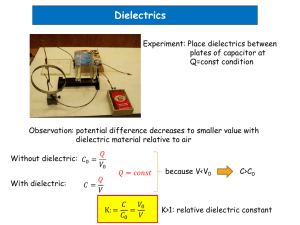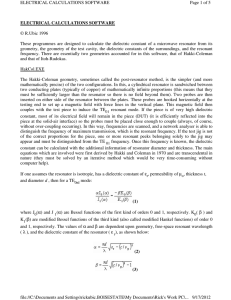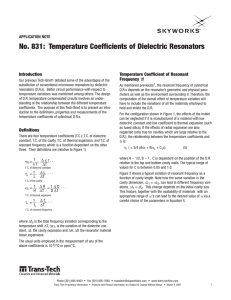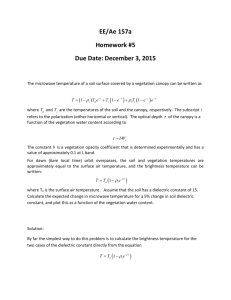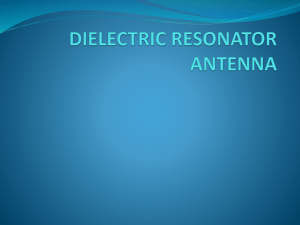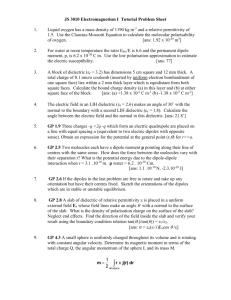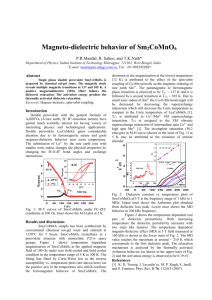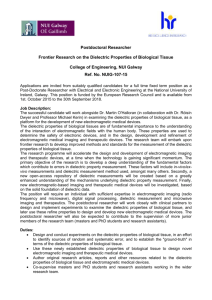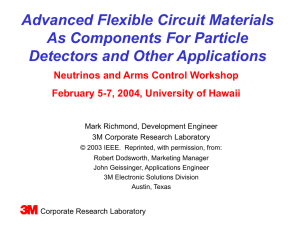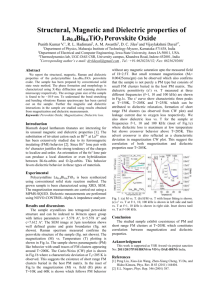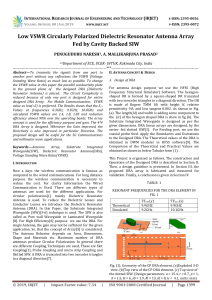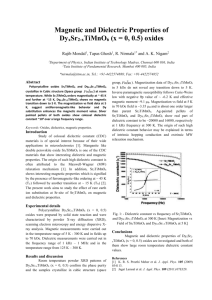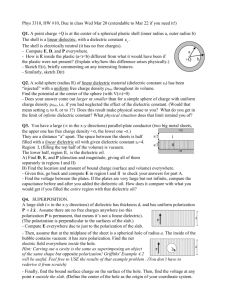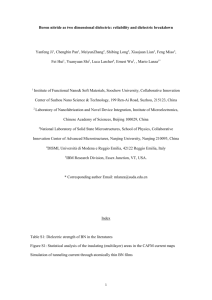SC 1 Dielectric Resonator Antennas, Theory, Design
advertisement
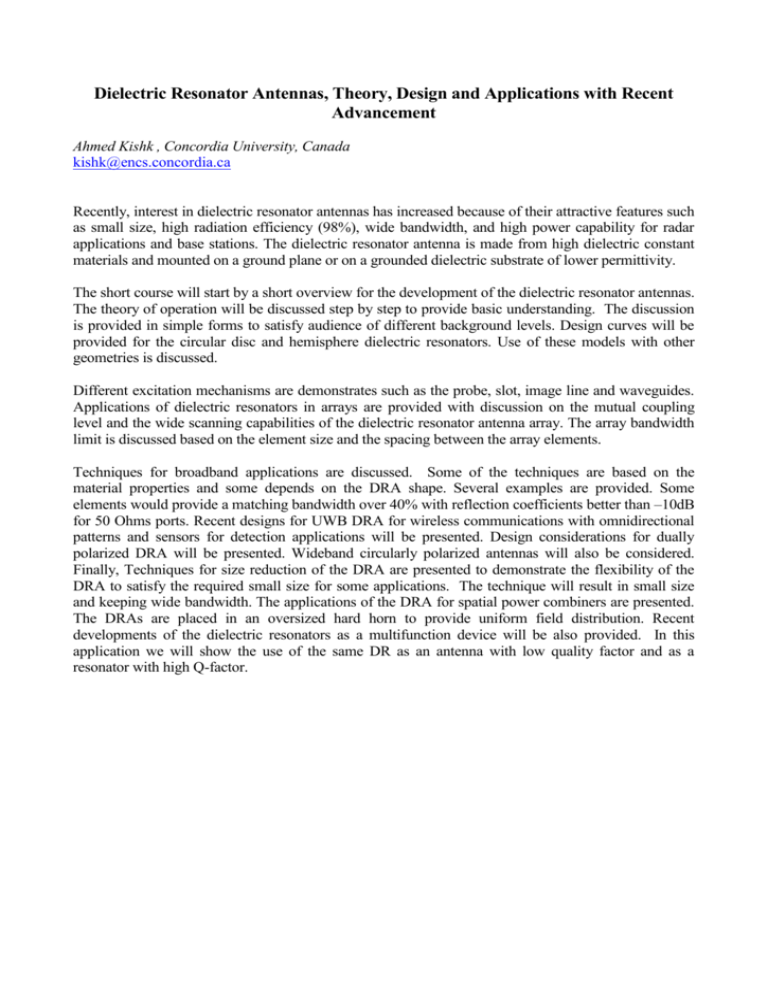
Dielectric Resonator Antennas, Theory, Design and Applications with Recent Advancement Ahmed Kishk , Concordia University, Canada kishk@encs.concordia.ca Recently, interest in dielectric resonator antennas has increased because of their attractive features such as small size, high radiation efficiency (98%), wide bandwidth, and high power capability for radar applications and base stations. The dielectric resonator antenna is made from high dielectric constant materials and mounted on a ground plane or on a grounded dielectric substrate of lower permittivity. The short course will start by a short overview for the development of the dielectric resonator antennas. The theory of operation will be discussed step by step to provide basic understanding. The discussion is provided in simple forms to satisfy audience of different background levels. Design curves will be provided for the circular disc and hemisphere dielectric resonators. Use of these models with other geometries is discussed. Different excitation mechanisms are demonstrates such as the probe, slot, image line and waveguides. Applications of dielectric resonators in arrays are provided with discussion on the mutual coupling level and the wide scanning capabilities of the dielectric resonator antenna array. The array bandwidth limit is discussed based on the element size and the spacing between the array elements. Techniques for broadband applications are discussed. Some of the techniques are based on the material properties and some depends on the DRA shape. Several examples are provided. Some elements would provide a matching bandwidth over 40% with reflection coefficients better than –10dB for 50 Ohms ports. Recent designs for UWB DRA for wireless communications with omnidirectional patterns and sensors for detection applications will be presented. Design considerations for dually polarized DRA will be presented. Wideband circularly polarized antennas will also be considered. Finally, Techniques for size reduction of the DRA are presented to demonstrate the flexibility of the DRA to satisfy the required small size for some applications. The technique will result in small size and keeping wide bandwidth. The applications of the DRA for spatial power combiners are presented. The DRAs are placed in an oversized hard horn to provide uniform field distribution. Recent developments of the dielectric resonators as a multifunction device will be also provided. In this application we will show the use of the same DR as an antenna with low quality factor and as a resonator with high Q-factor.
